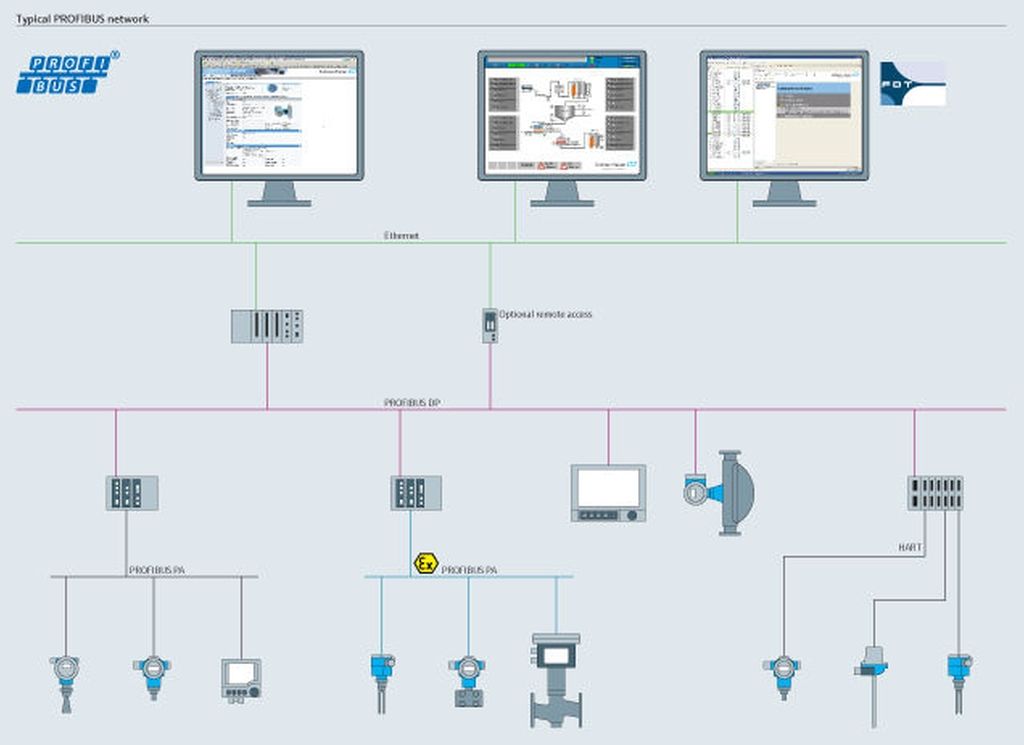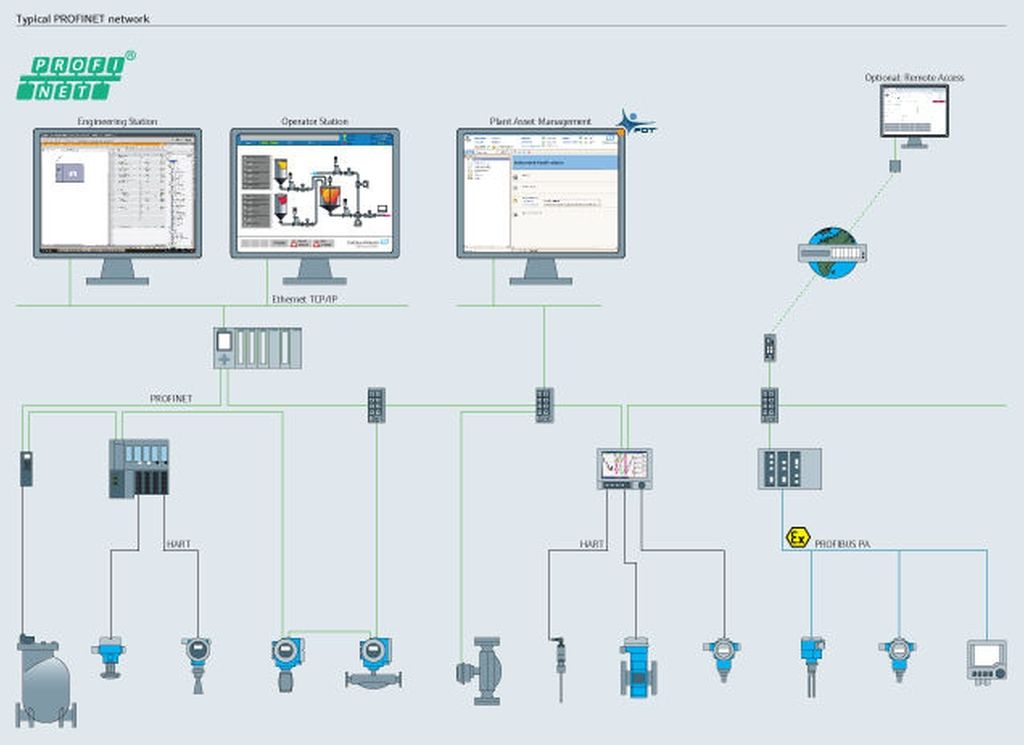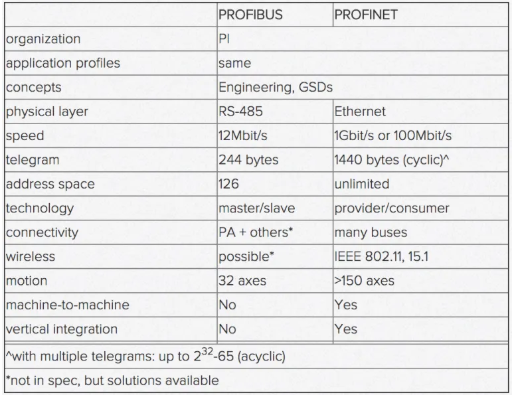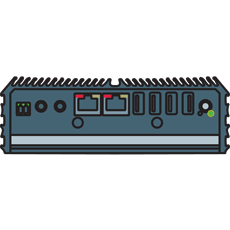Everything about a PROFIBUS network and how to use it with IIoT services!
It’s great if you have a PROFIBUS network. It’s much easier to beef it up by implementing an Industrial Internet of Things solution and then get the full power of your system. But if you don’t have a PROFIBUS at your plant, don’t worry! Let’s figure it out something together.
The idea of this new article is to give necessary information regarding PROFIBUS networks. I will talk about the types of PROFIBUS, how they work, the difference between PROFIBUS and PROFINET and how to apply IIoT in a PROFIBUS solution.
After reading it, you’re going to be ready to improve your network. But even if you don’t have one, you will have all essential information for planning an implementation at your plant.
It’s also important to say that the community of PROFIBUS users is growing daily. The interest group responsible for the protocol is doing a great job spreading the PROFIBUS word everywhere they go.
Are you ready? Let’s have a closer look at this protocol and learn how to use it together with IIoT services in order to get the best performance from your field devices and network.
What is PROFIBUS?
PROFIBUS is a digital network responsible for providing the communication between the field sensors and the control system or the controllers. The first idea during its development was to have PROFIBUS solutions implemented in factory automation industries, then process industries, manufacturing, etc.
At the very beginning, the interest group developed PROFIBUS FMS (Fieldbus Message Specification). It was a complex protocol that is no longer used today. After that, they worked to create PROFIBUS DP (Decentralised Peripherals) protocol and in 1998 PROFIBUS PA (Process Automation) was launched.
Today, when we talk about PROFIBUS, we have the PROFIBUS DP, and PROFIBUS PA. In addition to that PROFINET, based on Ethernet communication, has been developed and it’s already been implemented in many different areas and applications.
What are PROFIBUS types?
As I mentioned before, you will find PROFIBUS DP and PROFIBUS PA on the market. So now let’s see how PROFIBUS DP and PA work and in which applications they are used most frequently.

What is Profibus DP?
The PROFIBUS DP network was developed as a quick solution based on an RS485 physical layer and the European standard EN-50170. The physical layer does not have to be copper – you can also have wireless or fiber optics.
PROFIBUS DP stands for Decentralized Periphery. The name refers to the I/O connections, which use completely decentralized high-speed serial communication to connect to a central controller.
It’s also relevant to say that the PROFIBUS DP protocol is based on the Open System Interconnection (OSI) model according to the ISO 7498 standard and each protocol layer has defined tasks.
The PROFIBUS DP network is a multi-master token network – that means when there are two or more masters in the system, a token giving the right to talk to the field devices is passed from master to master, and each gets a share of the communication time.
There are two classes of master. Master Class 01 communicates cyclic information to control the process. Master Class 02 (optional) communicates acyclic information and is used for diagnostics, alarms and device configuration.
Looking at the speed, the network works at 9.6 kbp/s up to 12 Mbp/s in a system of 100 to 1000 meters. As far as the topology is concerned, PROFIBUS DP networks are linear, and you use gateways, repeaters, and terminators.
Last but not least, DP networks can have a ProfiSafe profile and they can be used in SIL3 safety applications.
What is Profibus PA?
Initially, the PROFIBUS PA protocol was developed as an evolution of HART communication. It is dedicated to field applications, where communication between the measuring instruments and the control system is required.
PROFIBUS PA uses twisted shielded pairs for both power and communication. Its physical network structure complies with IEC-61158-2 and the data rate on the network is 31.25kbit/s. Actually, it’s pretty much the same as FOUNDATION Fieldbus H1 – both are based on the same standard.
At the time of development, 31.25kbit/s was more than enough (and still is) for the type of information sent and received by field instruments.
PROFIBUS PA devices are not connected directly to the controller. This sits on the faster PROFIBUS DP network and is reached through a coupler or link. The coupler/link acts as a network interface and supplies the power to the bus.
The great thing about PA networks is that they can be designed to be intrinsically safe, which means the instruments connected to them can operate in hazardous areas.
Normally, there are fewer devices on an intrinsically safe bus when compared to a conventional network, but this depends on several factors that determine the optimal number of devices for each. These are, for instance, instrument consumption current, bus length, cable type, etc.
What is PROFINET?
Before I start, it’s essential to say that I won’t go into great depth about PROFINET here because, although it is also maintained by the PROFIBUS interest group, it is a different protocol. I’ll give more information about how it works some other time. Let’s just look at the essentials.
OK, I think we can say that PROFINET can be considered an evolution of the PROFIBUS protocol. In industry today, people like to use protocols based on Ethernet (IEEE 802.3) and the OSI model.
PROFINET can be applied from control to communication in the field, bringing a uniform and vertical network as well as all the advantages of IT in a company’s production areas.

You can already find many manufacturers with field instruments using a native Ethernet-based protocol. Another advantage regarding its implementation, is that this type of protocol is easy to implement because it uses a well-known model with a low infrastructure cost.
Please, don’t think that PROFINET is a PROFIBUS Ethernet, though! PROFINET is an open standard based on Ethernet and an evolution of the PROFIBUS protocol.
A significant advantage of PROFINET is its latent coexistence with TCP/IP, which adds substantial benefits. All devices are connected to a single network where control, diagnostics, etc. are performed. Gateways are normally not required.
The standard allows the network to be built up in many different ways, for instance a ring, line, tree or star etc. topology. PROFINET operates at speeds up to 1000 megabits per second, and cables may be up to 100 meters in length. Due to its high-speed operation, it has a response time of less than 1 millisecond.
What is the difference between PROFIBUS and PROFINET?
When we talk about PROFIBUS, we are talking about a traditional and well-known digital communication protocol that has been implemented in different industries and applications. This protocol is based on serial communication and has brought a lot of benefits to the industry.
PROFINET is a protocol based on the Industrial Ethernet. Yes, PROFINET supports faster communication and you also have more bandwidth. This means a message exchanged on the PROFINET network can contain a lot more information than a message on PROFIBUS.
Below you have a table from PROFIBUS International making a comparison between both options:

At the end of the day, it’s one of the best solutions available. However, it’s still essential to see what the requirements of your application are in order to implement the best communication protocol at your plant.
What is PROFIBUS and PROFINET International?
PROFIBUS and PROFINET International is a large automation community present in different parts of the world. They are responsible for PROFIBUS and PROFINET, two of the most relevant communication protocols on the market.
I really believe the organization is doing a great job of trying to decrease the gap on field protocol knowledge in different industries. I was part of the organization when I was working in Brazil, and we used to have large events to talk about the technology and bring knowledge to the end-users.
How to use IIoT services in a PROFIBUS network?
I always like to say that most of PROFIBUS users still treat the network like a 4-20 mA system. I’ve seen it many times at different customers: nobody uses the data from the network to understand what’s going on and act before something happens.
Of course, traditional condition monitoring solution can be quite complicated in some scenarios. However, now that we have IIoT services, the monitoring of device health status, finding database information and document management has never been easier. And you can do it from everywhere!

To collect the diagnostic and status information from the field, you need to have a so-called fieldgate. One good example is the Fieldgate SFG500. It will work as a Class 02 DP master, collecting all the data from your field devices. The fieldgate is then connected to an edge device, such as the FieldEdge SGC500.
All the information from the devices is transferred to the cloud using a secure environment. Here, you can use different types of IIoT service, for example Netilion Health to monitor the health status of your field devices.
At the same time, you can have Netilion Library to organize all the documentation concerning your field devices, such as technical manuals, calibration reports, and so on.
Last but not least, you can have better control of your installed base. Netilion Analytics, together with the edge device, will create a digital twin of your device, providing all the information regarding the installed base, such as the type of devices, vendors, criticality, obsolescence, and much more.
Do you think this article helped you? Then please share it on social media using the #netilion
Have a good one!



